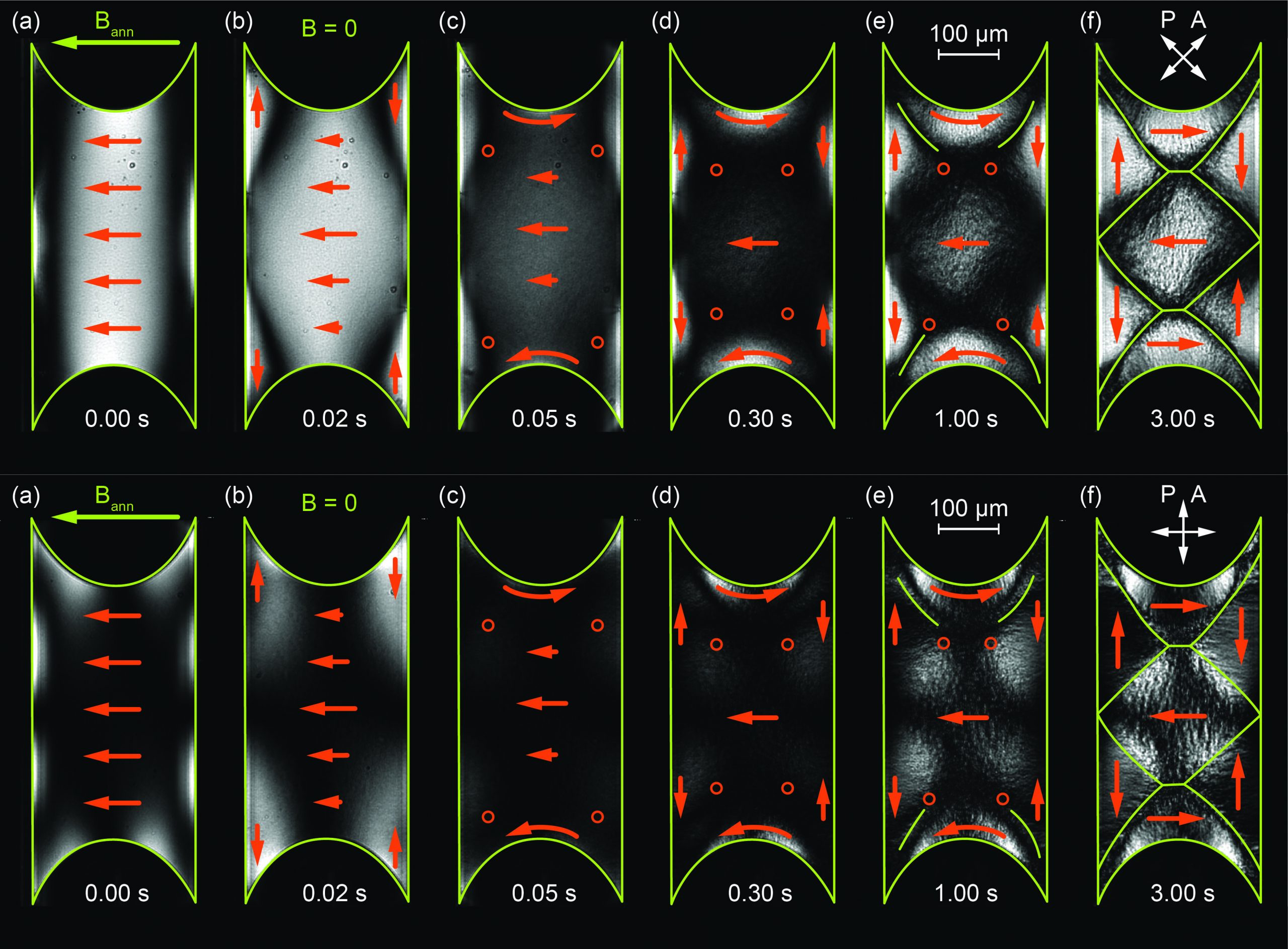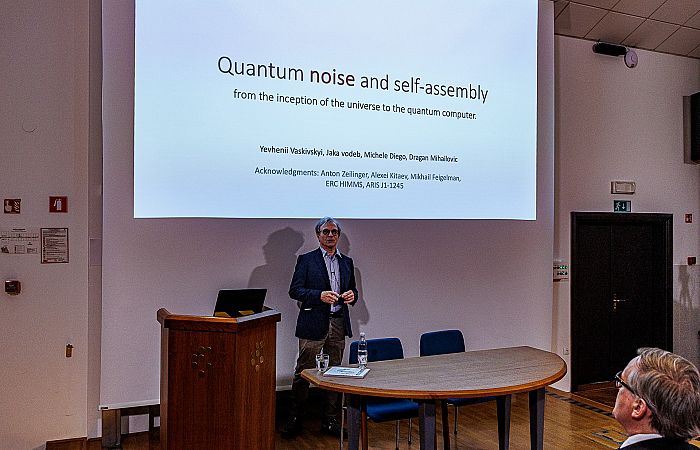Fundamental research on magnetic materials is of great and expanding interest due to the growing demand of novel magnetic functional materials for technological advances. Among them, magnetic responsive liquids are very interesting for a wide range of novel applications in the field of energy harvesting, magneto-mechanical actuation and pumping, light control by magnetic fields, or magnetic field sensing. Classical ferrofluids, i.e. colloidal suspensions of ferromagnetic nanoparticles dispersed in isotropic solvent, are despite their name, paramagnetic, since the dispersed particles have random orientations in the absence of external magnetic. Experimental realization of truly ferromagnetic ferrofluids, retaining magnetic ordering under no external fields, has been a long-standing challenge, which was only recently overcome by the groundbreaking research of some of the team members of the proposed project, where suspensions of scandium substituted barium hexaferrite nanoparticles in n-butanol show not only nematic ordering, but also spontaneous ferromagnetic fluid ordering. Such liquid magnets have opened up the possibility to experimentally study a completely new set of exciting fundamental physical phenomena lying between our understanding of solid magnets and paramagnetic ferrofluids.
In the present project, we aim to conduct a fundamental and thorough study of these novel magnet materials, with the final goal of creating a comprehensive framework for developing the field of ferromagnetisim in fluids. We will start by the optimization and development of these novel liquid magnet materials, by tuning the different parameters: the steric and magnetic interactions, by control of the particle size distribution/magnetization, and the electrostatic interactions by means of surfactant concentration. By full characterization of their physical properties (i.e. order parameter, birefringence, saturation magnetization, viscosities, diffusion coefficients, AC susceptibility), we aim to develop materials with tailored properties, in which response times to external fields are minimized while magnetic and optical responses are maximized. Structural analysis by means of SAXS, SANS, and SANSPOL should additionally provide insights into the spatial interparticle correlations and magnetic correlations. Remarkably, uniform magnetic domains spanning up to few millimeters can be systematically annealed by confinement in capillaries, forming textbook closure magnetic domain structures. Being fluid, the viscosities and orientational elastic constants will strongly influence the structure, stability, and formation time of the domains, resulting in a rich hierarchy of structures, where the domain walls can easily bend. We aim to generate in-depth understanding of such magnetic domain formation mechanisms under simple and customized confinement and to assess the stability of domains under external static fields, by combining experimental observations and the development of a macroscopic model based on the Landau-de-Gennes approach. By achievement of ultrasensitive monodomain samples, we will explore the possibilities of magnetic signal propagation by actuation with local static and time dependent microtesla magnetic fields. Finally, we will investigate the induction of flow by application of external time dependent magnetic fields, resulting from the strong coupling between flow and magnetization, with the final aim to realize a non-tactile microfluidic pumping system.
The proposed liquid magnets are responsive to magnetic fields orders of magnitude smaller than those usually reported for ferrofluids, and therefore constitute great progress in material development for novel applications of magnetic liquids. It is expected that the generated knowledge derived from these studies will form the basis for the potential exploitation of these new liquid magnets in technological applications.
Project activities:
- Development of liquid magnets with tailored properties
- Domain formation and stability.
- Determination of dynamic response to field perturbations.
Related publications
- P. Hribar Boštjančič, Ž. Gregorin, N. Sebastián, N. Osterman, D. Lisjak and A. Mertelj, “Isotropic to nematic transition in alcohol ferrofluids of barium hexaferrite nanoplatelets.” J. Mol. Liq., 2022, 348, 118038. DOI: 10.1016/j.molliq.2021.118038
- Ž. Gregorin, N. Sebastián, N. Osterman, P. Hribar Boštjančič, D. Lisjak and A. Mertelj, “Dynamics of domain formation in a ferromagnetic fluid”, J. Mol. Liq., 2022, 366, 120308. DOI: 10.1016/j.molliq.2022.120308
- H. Nádasi, M. Küster, A. Mertelj, N. Sebastián, P. Hribar Boštjančič, D. Lisjak, T. Viereck, M. Rosenberg, A. O. Ivanov, S. S. Kantorovich, A. Eremin and F. Ludwig, “Role of ionic surfactant in magnetic dynamics of self-assembled dispersions of nanoplatelets”, J. Mol. Liq., 2023, 382, 121900. DOI: 10.1016/j.molliq.2023.121900
- M. Küster, F. Ludwig, A. Eremin, P. H. Boštjančič, D. Lisjak, N. Sebastián, A. Mertelj and H. Nádasi, “Magnetic dynamics in suspensions of ferrimagnetic platelets”, J. Mol. Liq., 2022, 360, 119484. DOI: 10.1016/j.molliq.2022.119484
- M. Vilfan, B. Lampret, Ž. Gregorin, L. Cmok, A. Vilfan, J. Klepp, J. Kohlbrecher, P. Hribar Boštjančič, D. Lisjak and A. Mertelj, “Spontaneous chiral symmetry breaking and lane formation in ferromagnetic ferrofluids”, Small, 2023, 19, 2304387. DOI: doi.org/10.1002/smll.202304387
More details on SICRIS


Figures. Left Image: Dynamics of domain formation in ferromagnetic ferrofluids. Top Image: Suspension of nanoplates in an isotropic solvent at (left) low concentration and (right) high concentration. In the latter case, suspension exhibits net magnetization (M) and nematic ordering (n). The arrows denote magnetic moment of a single nanoplate.

The research project is (co)financed by the Slovenian Research and Innovation Agency.

